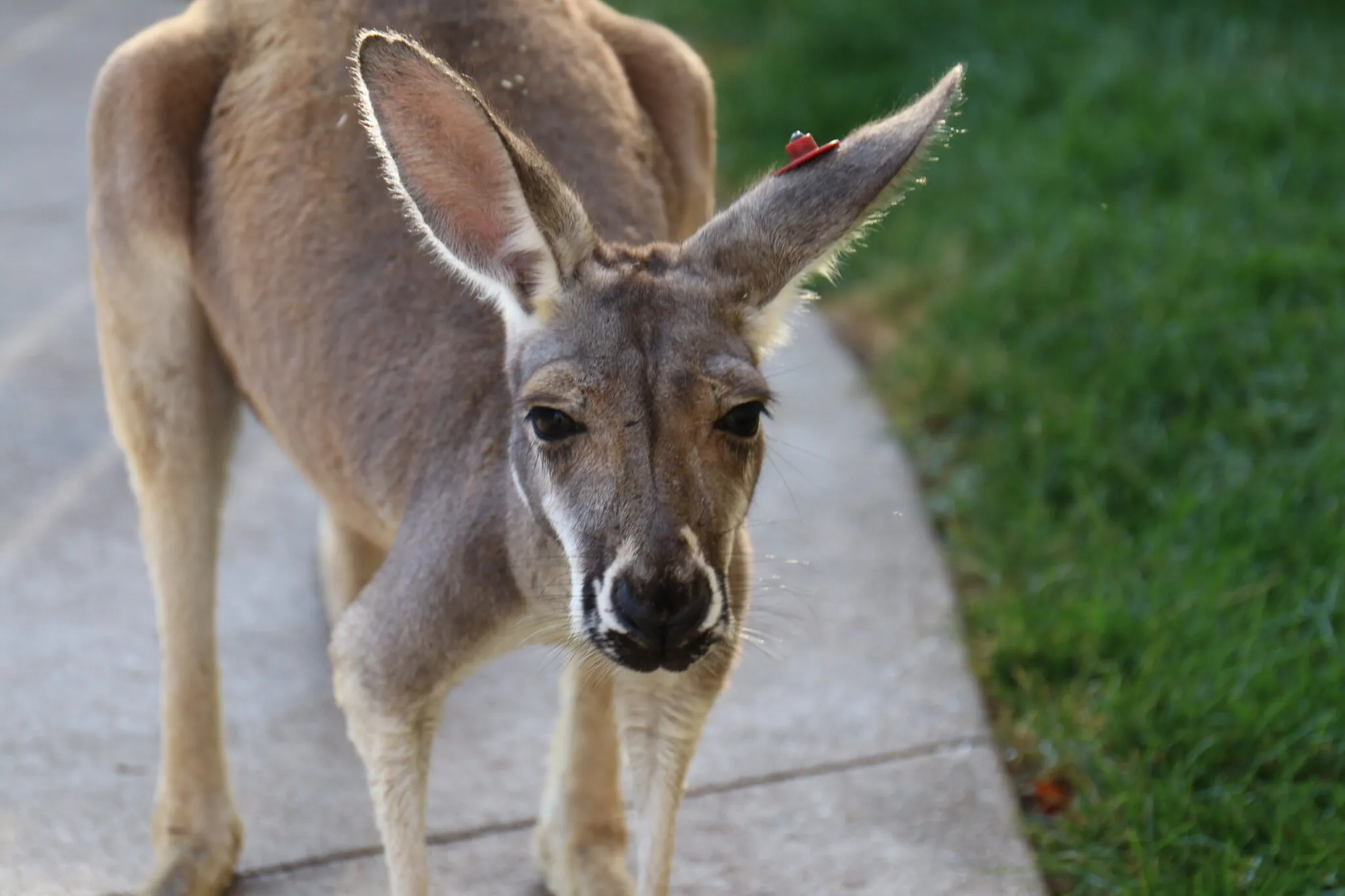-
Menu
- Plan Your Visit
- Meet The Animals
- Check Out Events
- Memberships
- About The Zoo
- Support the Zoo
- Conservation
- Education
- Groups & Private Events
- Zoo News
- Contact
- Zoo Store
- Indianapolis Prize
- Global Center for Species Survival
- Schedule
- Donate
- Membership
- Tickets

- Plan Your Visit
- Meet The Animals
- Check Out Events
- Memberships
- About The Zoo
- Support the Zoo
- Conservation
- Education
- Groups & Private Events
- Zoo News
- Contact
- Zoo Store
- Indianapolis Prize
- Global Center for Species Survival

Meet Our Mob!
Don’t miss your chance to meet our mob! (And yes, we’re talking about our Kangaroos.)
On June 18, the Indianapolis Zoo officially opened Kangaroo Crossing Presented by Citizens Energy Group. This unforgettable experience offers visitors the opportunity to walk into a large open area without fencing or other barriers to meet our kangaroos.
To see this all-new exhibit, just make your way to Café on the Commons. There, you’ll observe kangaroos roaming freely in their dedicated space as stunning Australian species like cockatoos fly overhead.
The Zoo has red kangaroos which are abundant in Australia and not at current risk of population decline. However, they experience physiological and reproductive stress during drought. As climate change brings more drought to parts of Australia, scientists are watching its impacts on kangaroo species.
Kangaroos are marsupials, meaning they are mammals that carry young in pouches. Like almost all other mammals, marsupials give live birth to a young joey about the size of a jellybean! Unlike other mammals, marsupial moms give birth to underdeveloped offspring that continue to grow in their highly specialized, built-in pouch. Young kangaroos will emerge from the pouch around 6 months and are weaned at 1 year.
We all know that kangaroos hop, but do you know why? They use their spring-loaded legs to hop across the land, which is a more energy efficient way for these big mammals to travel. Thick leg tendons attached to their hips help them make fast, high and wide leaps. Their thick tails help balance their body weight while at rest.
Q&A with a Kangaroo Keeper
Want to learn more about our mob of Roo’s here at the Zoo? We spoke to Plains Keeper, Kyle Scherer who shares some fun and interesting facts about our crew of kangaroos and the opening of Kangaroo Crossing presented by Citizens Energy Group.
ZOO: What does a kangaroo feel like?
Kyle: Their fur is dense but very soft! Think of the density of fur like a sheep but as soft as a bunny’s fur.
ZOO: How far can a kangaroo hop?
Kyle: Kangaroos have the ability to hop over 25 feet in one hop! They can even reach speeds up to 35 miles per hour when traveling!
ZOO: What do the kangaroos eat?
Kyle: Kangaroos are herbivores and primarily eat different kinds of grasses, leaves and roots of various plants. Here at the Zoo, they are given pelleted feed, orchard grass hay and leafy greens.
ZOO: How many kangaroos are at the Zoo?
Kyle: We have 13 red kangaroos here at the Zoo! We have 7 females and 6 males.
ZOO: Can guests pet the kangaroos?
Kyle: We are letting the kangaroos guide the interaction with guests, under the supervision of an Animal Care Team Member. If a kangaroo comes up to you, gently pet it on its back, not the face or ears – approaching slowly from behind is the best way to touch the kangaroo.
ZOO: What is your favorite thing about kangaroos?
Kyle: Kangaroos can have three babies at one time! How? Well, one joey becomes mature and is out of the pouch, another joey can develop in the pouch and one embryo is in embryonic diapause.
